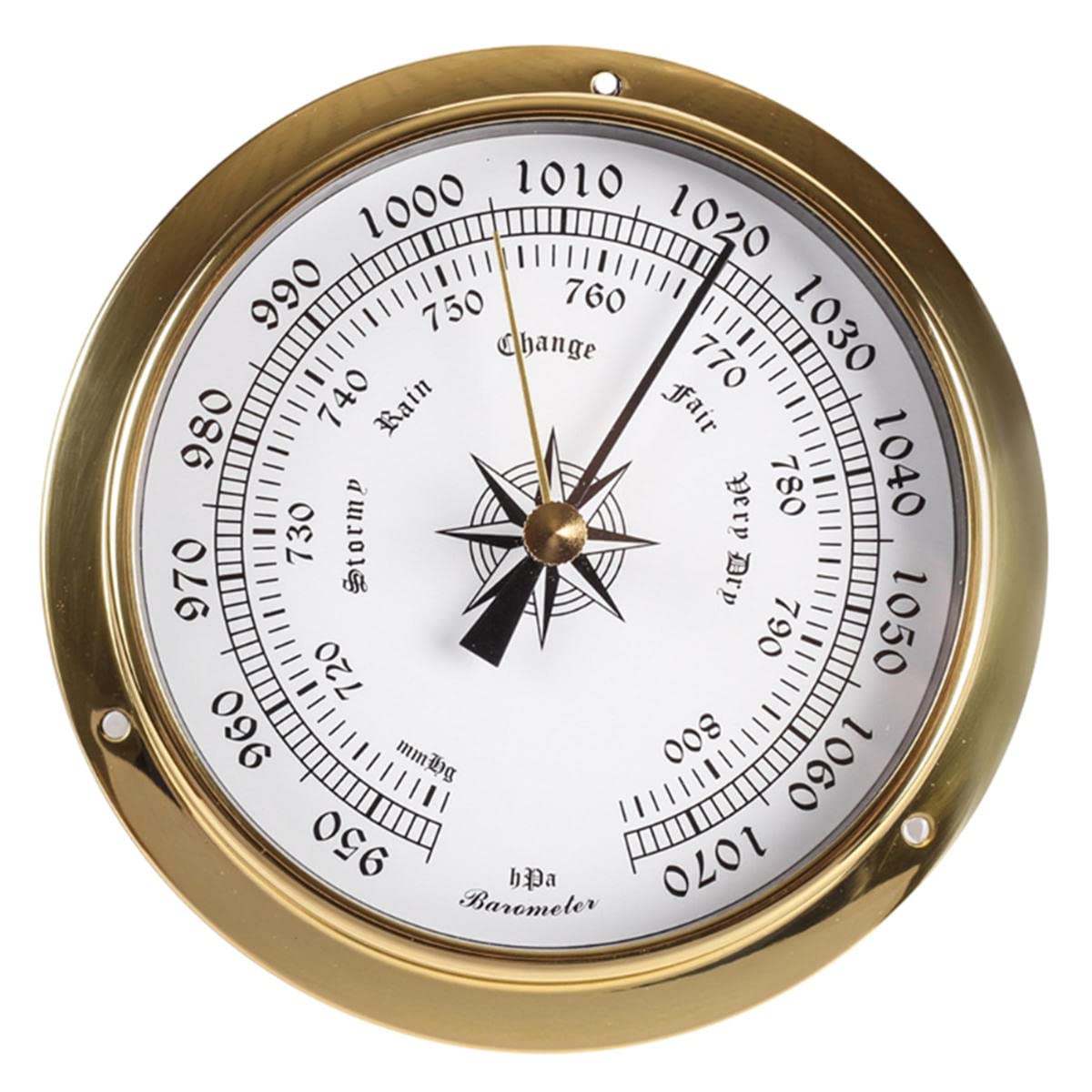

Articles
Which Weather Instrument Measures Humidity
Modified: January 19, 2024
Learn about the instrument used to measure humidity. Read articles on various weather instruments and their functions.
(Many of the links in this article redirect to a specific reviewed product. Your purchase of these products through affiliate links helps to generate commission for Storables.com, at no extra cost. Learn more)
Introduction
When it comes to understanding and predicting weather conditions, various instruments play a crucial role. These instruments help meteorologists gather data and make accurate forecasts. One key factor that plays a significant role in weather patterns is humidity. Humidity refers to the amount of moisture or water vapor present in the air. To measure humidity accurately, specialized instruments known as hygrometers are used.
Hygrometers are designed to provide accurate readings of humidity levels, allowing meteorologists and scientists to analyze and interpret weather patterns more effectively. By understanding the importance of measuring humidity and the different types of hygrometers available, we can gain insight into how these instruments contribute to our understanding of weather and climate conditions.
Understanding humidity is crucial because it affects various aspects of our daily lives. High humidity can make us feel uncomfortable, as the excess moisture in the air hampers our body’s natural cooling mechanism through evaporation. Additionally, humidity plays a significant role in influencing weather patterns, such as the formation of clouds, precipitation, and even the intensity of storms.
By measuring humidity, meteorologists can analyze how much water vapor is present in the air, helping them understand the likelihood of rainfall, the potential for severe weather events, and the overall comfort level in different regions. This data is essential for a wide range of fields, including agriculture, aviation, and even daily weather forecasts.
Hygrometers come in various types, each utilizing different principles to measure humidity accurately. Mechanical hygrometers, such as hair hygrometers and psychrometers, have been used for centuries. In recent years, advancements in technology have led to the development of electrical hygrometers, which are more accurate and convenient to use. Some popular types include capacitive hygrometers, resistive hygrometers, thermal conductivity hygrometers, and dew point hygrometers.
In this article, we will explore the different types of hygrometers in detail, delving into how they function and their respective advantages and limitations. By understanding the various instruments used to measure humidity, we can appreciate the complexity of weather prediction and the tools that facilitate it.
Key Takeaways:
- Hygrometers, from mechanical to electrical types, provide accurate humidity measurements crucial for weather prediction, human comfort, and industrial processes. Advancements in technology enhance their reliability and usability.
- Understanding humidity’s impact on human health, weather patterns, and industrial processes is vital. Hygrometers play a key role in providing accurate and reliable measurements for informed decision-making.
Overview of Weather Instruments
Weather instruments are essential tools used by meteorologists to gather data and monitor atmospheric conditions. These instruments help in measuring various meteorological parameters such as temperature, humidity, air pressure, wind speed and direction, and precipitation. By collecting accurate and reliable data, meteorologists can analyze weather patterns and make informed predictions.
Some of the most commonly used weather instruments include:
- Thermometer: Measures temperature
- Hygrometer: Measures humidity
- Barometer: Measures air pressure
- Anemometer: Measures wind speed and direction
- Rain gauge: Measures precipitation
- Weather vane: Indicates wind direction
- Pyranometer: Measures solar radiation
These instruments work together to provide a comprehensive understanding of the Earth’s atmosphere. They are strategically placed in various locations, including weather stations, airports, and research facilities, to gather data continuously.
Weather instruments utilize different technologies and principles to measure specific parameters. For example, thermometers rely on the expansion and contraction of liquids or metals with temperature changes. Hygrometers, on the other hand, focus on measuring the moisture content in the air, commonly referred to as humidity.
Humidity is an essential weather parameter as it affects not only human comfort but also various natural processes and phenomena. Understanding humidity levels can help in predicting cloud formation, rainfall patterns, and even the behavior of hurricanes and thunderstorms. To accurately measure humidity, hygrometers come into play.
It is important to note that while weather instruments provide valuable data, they are not infallible. Factors such as instrument calibration, environmental conditions, and human error can impact the accuracy of the measurements. Therefore, it is necessary to regularly calibrate and maintain these instruments to ensure reliable and precise readings.
Weather instruments have evolved significantly over time, with advancements in technology enhancing their accuracy and efficiency. From traditional analog instruments to modern digital sensors, the field of meteorology continues to benefit from these innovations. The development of specialized instruments for measuring humidity, such as hygrometers, has greatly contributed to our understanding of the complex relationship between moisture in the atmosphere and weather patterns.
By combining the data collected from various weather instruments, meteorologists can build comprehensive models and forecasts that help us better prepare for and respond to weather-related events. The ongoing advancements in weather instrument technology continue to improve our ability to understand and predict weather conditions, leading to safer and more informed decision-making.
Importance of Measuring Humidity
Measuring humidity is crucial for a variety of reasons, ranging from personal comfort to understanding and predicting weather patterns. Humidity, which refers to the amount of moisture or water vapor present in the air, plays a significant role in numerous natural processes and human activities. By accurately measuring humidity levels, we can gain valuable insights into various aspects of our environment.
Here are some key reasons why measuring humidity is important:
- Understanding Human Comfort: Humidity greatly affects our comfort levels. High humidity levels can make us feel sticky, hot, and uncomfortable, as the excess moisture in the air hampers our body’s natural cooling mechanism through evaporation. On the other hand, low humidity can lead to dry and itchy skin, chapped lips, and respiratory issues. Measuring humidity helps us assess the comfort level in indoor environments and make necessary adjustments, such as using dehumidifiers or humidifiers.
- Promoting Health and Well-being: Humidity levels can impact our respiratory health. High humidity can create a breeding ground for mold, bacteria, and other allergens, which can trigger respiratory issues like asthma and allergies. Measuring humidity helps in identifying and controlling potential health risks, particularly in enclosed spaces such as homes, schools, and offices.
- Agriculture and Plant Growth: Humidity plays a crucial role in agriculture and plant growth. Different plants have specific humidity requirements for optimal growth and development. Measuring humidity aids farmers and horticulturists in creating the ideal environment for their crops. Additionally, understanding humidity levels can help in estimating the amount of water plants need or the risk of diseases that thrive in high humidity conditions.
- Weather Prediction: Humidity is a crucial factor in weather patterns. By measuring humidity, meteorologists can analyze how much water vapor is present in the air, contributing to the formation of clouds, precipitation, and even the intensity of storms. Humidity data is essential for predicting weather conditions, understanding climate patterns, and issuing accurate forecasts.
- Industrial Applications: Humidity measurement is vital in various industries such as manufacturing, pharmaceuticals, and electronics. Controlling humidity is critical for production processes, storage of sensitive materials, and maintaining equipment performance. Measuring humidity helps ensure product quality and extends the lifespan of machinery.
- Energy Efficiency: Humidity levels impact the efficiency of heating, ventilation, and air conditioning systems (HVAC). By accurately measuring humidity, energy consumption can be optimized to maintain comfortable and healthy indoor environments while minimizing energy waste.
By understanding the importance of measuring humidity, we can make informed decisions in various sectors, enhance personal well-being, and improve our ability to predict and respond to weather-related events. Accurate and reliable humidity measurements contribute to a safer, healthier, and more comfortable living and working environment for all.
Hygrometer: The Instrument for Measuring Humidity
Hygrometers are specialized instruments designed to measure humidity levels in the atmosphere. They play a crucial role in various fields, including meteorology, agriculture, manufacturing, and indoor climate control. By providing accurate and reliable measurements, hygrometers help us understand the moisture content in the air and its impact on our environment.
A hygrometer works by utilizing different principles and technologies to measure humidity. The most common methods used include mechanical, electrical, and dew point measurements. Each type of hygrometer has its advantages and limitations, but they all serve the same purpose: to quantify the amount of moisture present in the air.
Measuring humidity accurately is important because it influences various natural processes and human activities. High humidity levels can make us feel uncomfortable, affect our health, promote the growth of molds and bacteria, and impact the efficiency of industrial processes. On the other hand, low humidity levels can lead to dry skin, respiratory issues, and damage to wooden structures or sensitive equipment.
When it comes to choosing the right hygrometer, it is important to consider factors such as accuracy, response time, durability, and the intended application. Here are some common types of hygrometers:
- Mechanical Hygrometer: Mechanical hygrometers have been used for centuries and rely on the expansion and contraction of certain materials with changes in humidity. One popular type is the hair hygrometer, which uses a bundle of human or animal hair that expands or contracts depending on the moisture content in the air.
- Psychrometer: A psychrometer, also known as a wet and dry bulb hygrometer, utilizes the principle of evaporation to measure humidity. It consists of two thermometers, one of which has a wet wick. By comparing the readings of the two thermometers, the relative humidity can be determined.
- Electrical Hygrometer: Electrical hygrometers utilize electronic sensors to measure humidity. These sensors measure changes in electrical capacitance or resistance in response to moisture. Capacitive hygrometers are widely used and provide accurate and fast readings, while resistive hygrometers have a lower cost but may sacrifice some accuracy.
- Thermal Conductivity Hygrometer: This type of hygrometer measures humidity based on the principle of thermal conductivity. It consists of a sensor that measures the rate at which heat is transferred between a heated element and the surrounding air. As humidity changes, the rate of heat transfer is affected, allowing for the calculation of humidity levels.
- Dew Point Hygrometer: Dew point hygrometers measure the dew point temperature, which is the temperature at which condensation occurs. By calculating the dew point temperature, the humidity of the air can be determined. These hygrometers are commonly used in industries where precise humidity control is necessary, such as in drying processes or environmental chambers.
Hygrometers have made significant advancements in recent years, with digital and wireless capabilities for easy data collection and analysis. Additionally, calibration and regular maintenance of hygrometers are essential to ensure accurate and consistent readings.
By using hygrometers, we can monitor humidity levels, make informed decisions, and create optimal conditions in various environments. Whether it is for weather prediction, plant growth, health and comfort, or industrial applications, hygrometers are invaluable instruments that contribute to our understanding of moisture in the air and its impact on our lives.
Types of Hygrometers
Hygrometers are instruments used to measure humidity levels in the air, providing valuable information about the moisture content in various environments. There are several types of hygrometers available, each utilizing different principles and technologies to measure humidity accurately. Let’s explore some of the most commonly used types:
- Mechanical Hygrometer: Mechanical hygrometers have a long history and were among the first instruments used to measure humidity. The most well-known type is the hair hygrometer, which uses a bundle of human or animal hair as the sensing element. As the air’s moisture content changes, the hair expands or contracts, causing the pointer to move, indicating the humidity level. These hygrometers are reliable and have been in use for centuries, but they may require periodic recalibration.
- Psychrometer: Psychrometers, also known as wet and dry bulb hygrometers, use the principle of evaporation to measure humidity. They consist of two thermometers: one has a dry bulb, and the other has a wet cloth or wick. The evaporation from the wet bulb cools the thermometer, causing it to display a lower temperature than the dry bulb. By comparing the two readings, the relative humidity can be determined using specialized humidity charts or equations.
- Electrical Hygrometer: Electrical hygrometers utilize electronic sensors to measure humidity. There are two main types of electrical hygrometers: capacitive and resistive. Capacitive hygrometers measure changes in electrical capacitance caused by the absorption or release of moisture in a dielectric material. They are widely used due to their high accuracy, fast response time, and low power consumption. Resistive hygrometers, on the other hand, measure changes in electrical resistance caused by humidity changes. They are less expensive but may sacrifice some accuracy compared to capacitive hygrometers.
- Thermal Conductivity Hygrometer: Thermal conductivity hygrometers measure humidity based on the principle of thermal conductivity. These hygrometers consist of a sensor that generates heat and measures the rate of heat transfer to the surrounding air. As humidity levels change, the rate of heat transfer also changes. By analyzing the heat transfer rate, the humidity level can be determined. Thermal conductivity hygrometers are known for their accuracy and reliability.
- Dew Point Hygrometer: Dew point hygrometers measure the dew point temperature, which is the temperature at which condensation occurs. These hygrometers use various techniques such as chilled mirror technology or electrolytic conductivity to determine the dew point temperature. By measuring the dew point temperature, the humidity level can be inferred. Dew point hygrometers are commonly used in industrial applications where precise humidity control is necessary, such as in manufacturing processes, pharmaceutical storage, and environmental chambers.
Each type of hygrometer has its own advantages and limitations, depending on the intended application, accuracy requirements, and cost considerations. It is important to choose the appropriate hygrometer based on the specific needs and environment in which it will be used. Regular calibration and maintenance of hygrometers are also essential to ensure accurate and reliable readings over time.
The advancements in technology have led to the development of digital hygrometers, which offer convenience and additional features such as data logging, wireless connectivity, and real-time monitoring. These modern hygrometers have made it easier than ever to measure and track humidity levels accurately, providing valuable insights into the moisture content of our surroundings.
By utilizing different types of hygrometers, scientists, meteorologists, industries, and individuals can gain a better understanding of humidity levels and make informed decisions regarding comfort, health, climate control, and various industrial processes.
Mechanical Hygrometer
Mechanical hygrometers are a classic type of hygrometer that have been used for centuries to measure humidity levels. They rely on the expansion and contraction of certain materials in response to changes in humidity, providing a simple yet effective way to gauge moisture in the air. One of the most popular and well-known types of mechanical hygrometers is the hair hygrometer.
The hair hygrometer utilizes a bundle of human or animal hair as the sensing element. These hygrometers work on the principle that hair expands or contracts as it absorbs or releases moisture from the surrounding environment. When the air becomes more humid, the hair absorbs moisture and expands, causing the pointer on the hygrometer’s dial to move towards the high-humidity side. Conversely, when the air is drier, the hair releases moisture and contracts, causing the pointer to move towards the low-humidity side.
Hair hygrometers have been favored for their simplicity, reliability, and wide measurement range. The hair used in these hygrometers is carefully selected and treated to ensure consistent and accurate readings. The sensing element is often mounted on a spindle or pivot, allowing for smooth movement of the pointer as humidity levels change.
One advantage of mechanical hygrometers is that they do not require a power source. They are entirely mechanical devices that rely on the natural physical properties of the hair or other materials used. This makes them suitable for use in remote locations or areas where power sources may not be readily available.
However, it is important to note that mechanical hygrometers, including hair hygrometers, require periodic calibration to maintain accuracy. The hair used in these hygrometers can be affected by external factors such as temperature, age, and exposure to contaminants. Regular recalibration against a reliable reference is necessary to ensure precise and consistent readings over time.
While mechanical hygrometers, including hair hygrometers, have a long-standing history and are still used in some applications, they have some limitations. They may not provide the same level of accuracy as digital or electronic hygrometers. Additionally, mechanical hygrometers, especially those with exposed moving parts, can be susceptible to wear and tear, which may affect their performance and longevity.
Overall, mechanical hygrometers, such as the hair hygrometer, offer a traditional and reliable method for measuring humidity levels. They have stood the test of time and continue to be used in various settings. However, with advancements in technology, digital and electronic hygrometers are becoming more popular for their higher accuracy, ease of use, and additional features. The choice of which type of hygrometer to use ultimately depends on the specific application requirements and individual preferences.
Hair Hygrometer
The hair hygrometer is a type of mechanical hygrometer that has been used for centuries to measure humidity levels. It utilizes a bundle of human or animal hair as the sensing element to provide a reliable and accurate indication of moisture in the air. The concept behind the hair hygrometer is based on the hygroscopic nature of hair – the hair expands and contracts in response to changes in humidity.
The hair used in these hygrometers is carefully selected and prepared to ensure consistent and precise measurements. Typically, the hair is treated and stabilized to minimize the effects of temperature changes and external factors. This ensures that the hair responds primarily to changes in humidity, making the hygrometer a reliable tool for measuring moisture in the air.
The hair hygrometer consists of a hair bundle that is attached to a spindle or pivot. As the humidity level increases, the hair absorbs moisture from the air, causing it to expand. This expansion is translated into a movement of the pointer on the dial of the hygrometer, indicating higher humidity levels. Conversely, when the air becomes drier, the hair releases moisture and contracts, causing the pointer to move towards the lower humidity range.
One of the advantages of hair hygrometers is their wide measurement range. They can effectively measure humidity levels from very low to high ranges, making them suitable for a variety of applications. Hair hygrometers are also known for their simplicity and reliability. They do not require external power sources and can provide accurate readings without the need for complex electronic components.
However, hair hygrometers do have some limitations. They require periodic calibration to maintain accuracy, as factors such as temperature, age, and exposure to contaminants can affect the response of the hair. Regular calibration against a reliable reference is necessary to ensure precise and consistent readings. In addition, hair hygrometers are more prone to mechanical wear and tear due to the movement of the hair and the spindle. Care must be taken to handle and store them properly to maintain their performance and longevity.
Despite these limitations, hair hygrometers continue to find applications in various fields. They are often used in historical and archival settings, museums, and other environments where maintaining stable humidity conditions is crucial for the preservation of artifacts and documents. Hair hygrometers are also commonly used in educational settings to teach the principles of humidity measurement and as a cost-effective option for basic monitoring in homes and offices.
Overall, the hair hygrometer remains a reliable and widely used method for measuring humidity. Its simplicity, wide measurement range, and historical significance make it a valuable instrument in understanding and monitoring moisture levels in the air. While newer technologies have introduced digital and electronic hygrometers with enhanced accuracy and features, the hair hygrometer continues to hold its place as a trusted and practical tool for humidity measurement.
A hygrometer is the weather instrument used to measure humidity. It can be a mechanical or electronic device and is commonly used in weather stations and for indoor climate control.
Psychrometer
A psychrometer, also known as a wet and dry bulb hygrometer, is a type of hygrometer that uses the principle of evaporation to measure humidity levels. It consists of two thermometers: one with a dry bulb and the other with a wet bulb. The psychrometer provides a reliable and accurate way to determine relative humidity by comparing the temperatures recorded by the two thermometers.
The dry bulb thermometer measures the ambient air temperature, similar to a regular thermometer. However, the wet bulb thermometer is covered with a wet cloth or wick. As moisture evaporates from the wet cloth, it cools the bulb and results in a lower temperature reading compared to the dry bulb thermometer.
The difference between the readings of the dry bulb and wet bulb thermometers is used to calculate the relative humidity using specialized humidity charts or equations. The greater the difference between the two temperatures, the lower the relative humidity, as the evaporation rate increases in drier air. Conversely, in more humid conditions, the evaporation rate decreases, resulting in a smaller temperature difference between the two bulbs and indicating higher relative humidity.
Psychrometers are often used in weather stations, laboratories, and other settings where precise humidity measurements are required. They are portable and relatively simple to use, making them valuable tools for field measurements. Psychrometers can provide reliable humidity readings in a wide range of environments, including indoors and outdoors.
However, it is important to note that psychrometers require careful handling and proper maintenance to ensure accurate measurements. The wet cloth or wick on the wet bulb needs to be moistened regularly to ensure consistent evaporation. In addition, the thermometers must be clean and calibrated to ensure accurate temperature readings. Regular calibration against a reliable reference is necessary to guarantee precise and reliable humidity measurements.
Psychrometers have been used for many years and are a trusted method for humidity measurement. They have proven to be a valuable tool in weather forecasting, as humidity plays a significant role in the formation of clouds, precipitation, and overall weather patterns. Psychrometers also find applications in agriculture, HVAC systems, and various industrial processes where humidity control is critical.
While digital and electronic hygrometers have become more prevalent due to their convenience and advanced features, psychrometers still hold their place as a dependable and accurate method for measuring humidity. By utilizing the principles of evaporation, psychrometers provide valuable insights into the moisture content of the air, helping us better understand and respond to weather conditions and environmental factors.
Electrical Hygrometer
Electrical hygrometers are advanced instruments that use electronic sensors to measure humidity levels accurately. These hygrometers employ various principles and technologies to measure the moisture content in the air, offering high precision and reliability. They have gained popularity in numerous industries and applications, including meteorology, manufacturing, HVAC systems, and research facilities.
There are two main types of electrical hygrometers: capacitive and resistive. Both types utilize changes in electrical properties to measure humidity, but they differ in their sensing mechanisms and output signals.
Capacitive Hygrometer: Capacitive hygrometers employ a humidity-sensitive capacitor to measure changes in humidity. The sensing element consists of a hygroscopic material that absorbs or desorbs moisture based on the humidity level. As the moisture content changes, the dielectric properties of the sensing material also change, resulting in variations in the capacitance of the capacitor. These changes in capacitance are then converted into humidity readings. Capacitive hygrometers offer high accuracy and fast response times. They are widely used in various applications due to their reliability, low power consumption, and digital output signals.
Resistive Hygrometer: Resistive hygrometers use a humidity-sensitive resistor to measure humidity levels. The sensing element typically consists of a moisture-absorbing material that changes its resistance based on the humidity level. As the moisture content increases, the resistance of the sensing material decreases, and vice versa. This change in resistance is correlated with the humidity level and converted into humidity readings. Resistive hygrometers are cost-effective and relatively simple in design. However, they may sacrifice some accuracy in comparison to capacitive hygrometers.
Electrical hygrometers offer several advantages over other types of hygrometers. They provide precise and instantaneous humidity measurements, allowing for real-time monitoring and analysis of humidity fluctuations. These hygrometers often have digital displays, making it easy to read and record humidity values. Additionally, many electrical hygrometers offer features such as data logging, wireless connectivity, and compatibility with computer systems, enabling efficient data collection and analysis.
It is important to note that electrical hygrometers require regular calibration to ensure accurate readings. Calibration helps maintain the accuracy and reliability of the sensors, compensating for any drift or deviations over time. Periodic calibration against a reliable reference is necessary to ensure the hygrometer’s performance remains consistent.
Electrical hygrometers have revolutionized the field of humidity measurement, offering precise and reliable information for a wide range of applications. Their accuracy, convenience, and digital capabilities have made them invaluable tools in various industries where humidity control and monitoring are essential.
As technology continues to advance, electrical hygrometers are becoming increasingly sophisticated, offering improved accuracy, faster response times, and enhanced data storage and analysis capabilities. They play a crucial role in ensuring optimal environmental conditions, improving product quality, enhancing human comfort, and contributing to scientific research.
Capacitive Hygrometer
A capacitive hygrometer is an advanced type of electrical hygrometer that uses the principle of capacitance to measure humidity accurately. It is widely used in various industries, including meteorology, HVAC systems, manufacturing, and research, due to its high accuracy and reliability.
The capacitive hygrometer employs a humidity-sensitive capacitor as the sensing element. This capacitor consists of two conductive plates separated by a dielectric material. The dielectric material is a hygroscopic substance that absorbs or desorbs moisture based on the humidity level in the surrounding environment.
As the moisture content in the air changes, the properties of the dielectric material also change. Specifically, the dielectric constant, which is a measure of how well the material can store electrical energy, varies with humidity. When the humidity increases, the dielectric constant of the material increases, resulting in a higher capacitance. Conversely, when the humidity decreases, the dielectric constant decreases, leading to a lower capacitance.
The change in capacitance is directly proportional to the change in humidity, allowing the capacitive hygrometer to provide accurate humidity readings. These readings are typically converted into digital form for easier interpretation and analysis.
Capacitive hygrometers offer several advantages over other types of hygrometers. Firstly, they provide high accuracy in humidity measurement. Additionally, capacitive hygrometers have a fast response time, allowing for near-instantaneous readings when exposed to changes in humidity levels. They also offer a wide measurement range and can accurately detect variations in humidity from very low to high levels.
Another benefit of capacitive hygrometers is their low power consumption. They operate on low power supply voltages and require minimal energy, making them suitable for battery-operated devices and applications where energy efficiency is crucial.
It is important to note that capacitive hygrometers require periodic calibration to maintain accuracy. Calibration ensures that the readings remain reliable and consistent over time. Generally, this involves comparing the hygrometer’s output to a reference standard and making adjustments if necessary.
Capacitive hygrometers have become increasingly prevalent due to advancements in sensor technology and their compatibility with digital systems. They often feature digital displays for easy reading of humidity values and can be integrated with other devices and systems for data logging and analysis.
Overall, capacitive hygrometers provide precise and reliable measurements of humidity. They have found applications in various industries where humidity control and monitoring are essential. By accurately measuring humidity, capacitive hygrometers contribute to maintaining optimal environmental conditions, ensuring product quality, enhancing indoor comfort, and supporting scientific research.
Resistive Hygrometer
A resistive hygrometer is a type of electrical hygrometer that uses changes in electrical resistance to measure humidity levels. It is widely used in various industries and applications where accurate humidity measurements are necessary, such as meteorology, HVAC systems, manufacturing, and research.
Resistive hygrometers employ a moisture-sensitive material as the sensing element. This material has a high affinity for water vapor and responds to changes in humidity by changing its resistance. As the moisture content in the surrounding air increases, the resistance of the sensing material decreases, and vice versa.
To measure the resistance, the resistive hygrometer contains a circuit that applies a known voltage across the sensing material and measures the resulting current. The change in humidity causes a variation in resistance, which leads to a change in current flow. By measuring this change in electrical resistance, the resistive hygrometer provides an accurate indication of the humidity level.
Resistive hygrometers offer several advantages in humidity measurement. They are generally cost-effective compared to other types of hygrometers, making them a popular choice in applications where budget constraints are a concern. Additionally, resistive hygrometers have a relatively simple design, allowing for ease of use and integration into various systems.
However, it is important to note that resistive hygrometers may sacrifice some accuracy compared to capacitive hygrometers. The relationship between electrical resistance and humidity is not as direct and precise as the relationship between capacitance and humidity. Resistive hygrometers may also be affected by external factors such as temperature changes or contaminants, which can influence the resistance readings.
Regular calibration against a reliable reference is necessary to ensure accurate and consistent readings with resistive hygrometers. Calibration helps compensate for any deviations or drift that may occur over time, ensuring reliable measurements and maintaining the performance of the hygrometer.
Despite their limitations, resistive hygrometers find widespread use in various industries. They are suitable for applications where relative humidity measurements are required but extremely high accuracy is not crucial. Resistive hygrometers also play a significant role in environments where cost-effectiveness and simplicity are valued.
Advancements in technology have led to the integration of more sophisticated features in resistive hygrometers, such as digital displays, data logging capabilities, and compatibility with computer systems. These features enhance usability and enable efficient data collection and analysis.
Overall, resistive hygrometers provide a practical and cost-effective solution for humidity measurement in numerous applications. While they may not offer the same level of accuracy as capacitive hygrometers, they continue to be a valuable tool in environments where relative humidity monitoring is essential.
Thermal Conductivity Hygrometer
A thermal conductivity hygrometer is a type of hygrometer that measures humidity based on the principle of thermal conductivity. It is commonly used in industries and applications where accurate humidity measurement is crucial, such as HVAC systems, manufacturing, and environmental monitoring.
The thermal conductivity hygrometer consists of a sensing element that measures the rate at which heat is transferred between a heated element and the surrounding air. As humidity levels change, the thermal conductivity of the air also changes, leading to variations in the heat transfer rate.
The sensing element typically uses a heated wire or thin-film element as the heat source and measures the temperature difference between the heated element and the ambient air. When the ambient air is dry, heat is transferred more rapidly, resulting in a larger temperature difference. On the other hand, when the air is more humid, heat transfer is slower, leading to a smaller temperature difference.
By analyzing the temperature difference, the thermal conductivity hygrometer can accurately determine the humidity level. This is achieved by comparing the measured temperature difference with the calibration curve or equation specific to the hygrometer’s design.
Thermal conductivity hygrometers offer several advantages in humidity measurement. They are known for their high accuracy, as thermal conductivity is directly influenced by changes in humidity. These hygrometers provide precise measurements across a wide range of humidity levels and perform well in challenging environments.
Another advantage of thermal conductivity hygrometers is their fast response time. They can quickly detect changes in humidity and provide near-instantaneous readings. This is especially valuable in applications where real-time monitoring and control of humidity are critical.
It is important to note that thermal conductivity hygrometers require regular calibration to maintain accuracy. Calibration helps compensate for any drift or deviations that may occur over time, ensuring that the hygrometer provides reliable and consistent readings. Periodic calibration against a reliable reference is necessary to ensure optimal performance.
Thermal conductivity hygrometers are widely used in various industries and applications. They are particularly suitable for environments where precise humidity control is essential, such as in manufacturing processes, storage facilities, and environmental chambers. These hygrometers contribute to maintaining optimal conditions in these settings, ensuring product quality, promoting efficiency, and supporting research and development.
While thermal conductivity hygrometers offer accurate measurements, they may require a power source to operate the heating element and associated circuitry. However, with advancements in technology, modern thermal conductivity hygrometers have become more energy-efficient, allowing for long-term operation with minimal power consumption.
In summary, thermal conductivity hygrometers are reliable and accurate instruments for measuring humidity. They play a crucial role in industries and applications where precise humidity control and monitoring are necessary. By utilizing the principle of thermal conductivity, these hygrometers provide valuable information that helps ensure optimal environmental conditions and promote efficient and high-quality processes.
Dew Point Hygrometer
A dew point hygrometer is a specialized type of hygrometer that measures humidity by determining the dew point temperature. It is commonly used in various industries and applications where precise humidity control and monitoring are essential, such as meteorology, manufacturing processes, and environmental chambers.
The dew point is the temperature at which dew or condensation forms on a surface when the air becomes saturated with moisture. The dew point temperature is directly related to the amount of water vapor present in the air. The lower the dew point temperature, the drier the air, and vice versa.
A dew point hygrometer utilizes various techniques to measure the dew point temperature accurately. Some common methods include chilled mirror technology, electrolytic conductivity, and optical detection.
In chilled mirror hygrometers, a mirror surface is cooled until it reaches the dew point temperature. As the mirror surface cools, condensation forms, and its temperature is monitored. By measuring the temperature at which condensation occurs, the dew point temperature, and hence the humidity level, can be determined accurately.
Electrolytic conductivity hygrometers use a hygroscopic material that absorbs moisture to change its electrical conductivity. By measuring the electrical conductivity of the material, which corresponds to the moisture content, the dew point temperature can be inferred.
Optical detection dew point hygrometers utilize the principle of optical lenses and sensors to detect the appearance of dew on a surface. By monitoring the point at which dew forms, the dew point temperature and humidity level can be determined.
Dew point hygrometers offer several advantages in humidity measurement. They provide highly accurate and precise results with excellent repeatability. By directly measuring the dew point temperature, dew point hygrometers offer a reliable and consistent indication of humidity levels.
One significant benefit of dew point hygrometers is their ability to provide measurements over a wide range of humidity levels, from very low to high humidity. This makes them well-suited for applications where precise humidity control is essential, such as in industrial drying processes or environmental chambers.
Regular calibration against a reliable reference is crucial to maintaining the accuracy and reliability of dew point hygrometers. Calibration ensures that the measurements provided by the hygrometer remain accurate and consistent over time, compensating for any drift or deviations that may occur.
Dew point hygrometers find applications in various industries where optimal humidity conditions are critical. They are crucial for environmental monitoring, energy management, industrial drying processes, and understanding the relationship between humidity and materials in manufacturing.
In summary, a dew point hygrometer is a specialized instrument that provides accurate and reliable measurements of humidity by determining the dew point temperature. By utilizing various techniques such as chilled mirror technology, electrolytic conductivity, or optical detection, these hygrometers offer precise humidity control and monitoring capabilities. They are essential tools in industries where maintaining optimal humidity conditions is crucial for quality, efficiency, and safety.
Conclusion
Humidity measurement plays a crucial role in various fields, from meteorology and agriculture to industrial processes and human comfort. Specialized instruments called hygrometers are used to measure humidity accurately, providing valuable insights into moisture levels in the air. Throughout this article, we have explored different types of hygrometers and their significance in understanding and monitoring humidity.
From mechanical hygrometers like hair hygrometers and psychrometers to electrical hygrometers including capacitive and resistive types, each instrument offers unique advantages and limitations. Mechanical hygrometers have a long history and are appreciated for their simplicity, while electrical hygrometers provide digital accuracy and additional features for ease of use. Thermal conductivity and dew point hygrometers offer specialized approaches to measuring humidity.
Hygrometers have evolved significantly over time, benefiting from advancements in technology. Digital displays, data logging capabilities, and wireless connectivity have made it easier than ever to measure and analyze humidity levels. Regular calibration and maintenance are essential to ensure accurate and reliable measurements from hygrometers.
Understanding humidity is crucial for several reasons. It influences human comfort, health, and well-being, as well as various natural processes such as cloud formation, precipitation, and plant growth. Humidity measurements are vital in weather prediction and climate analysis, supporting accurate forecasts and preparedness for weather-related events. In industries, humidity control ensures optimal conditions for production processes, storage, and equipment performance.
In conclusion, hygrometers are indispensable tools for measuring and monitoring humidity levels in a range of environments and applications. They contribute to our understanding of the complex relationship between moisture in the air and its impact on weather patterns, plant growth, human health, and industrial processes. By utilizing the appropriate type of hygrometer and ensuring periodic calibration, accurate humidity data can be obtained, leading to improved decision-making, comfort, and overall well-being.
Frequently Asked Questions about Which Weather Instrument Measures Humidity
Was this page helpful?
At Storables.com, we guarantee accurate and reliable information. Our content, validated by Expert Board Contributors, is crafted following stringent Editorial Policies. We're committed to providing you with well-researched, expert-backed insights for all your informational needs.
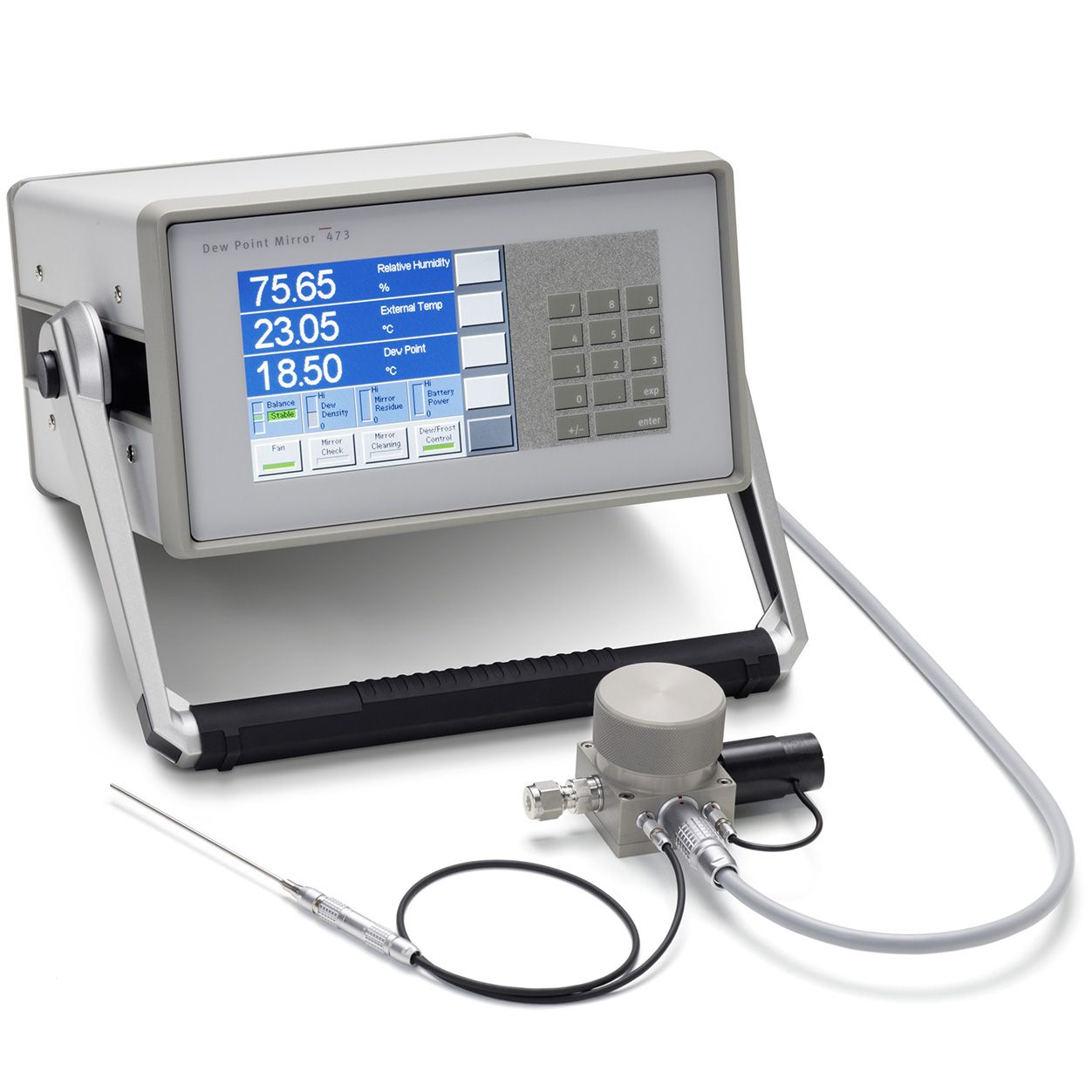
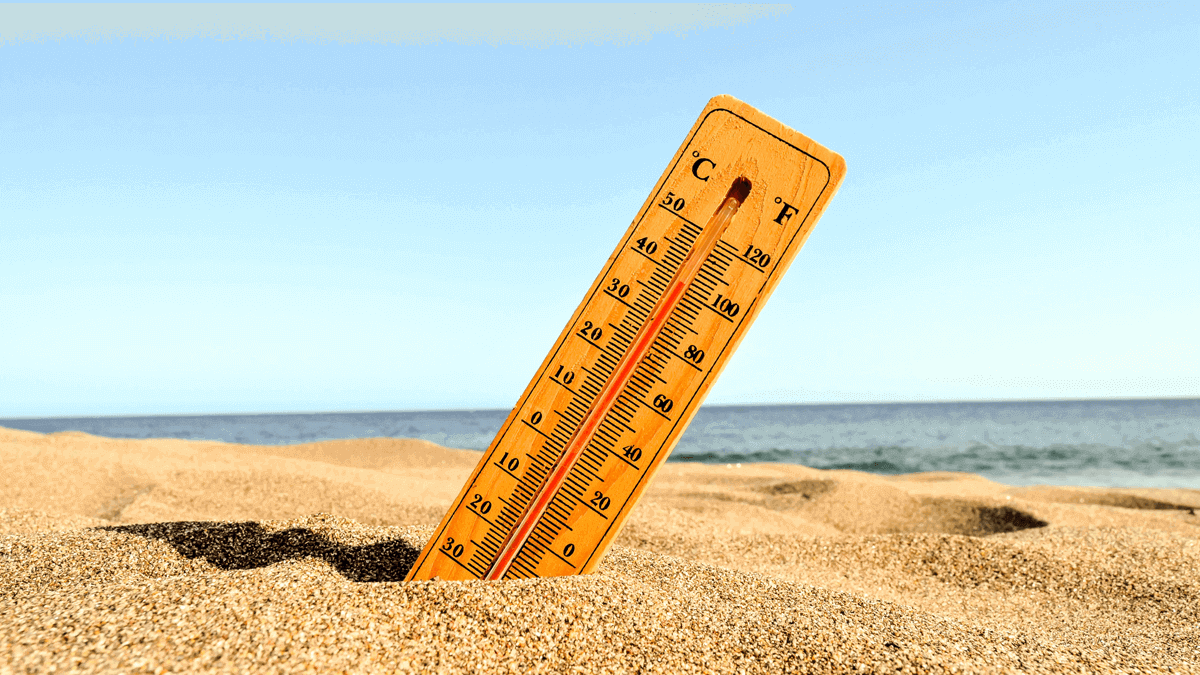
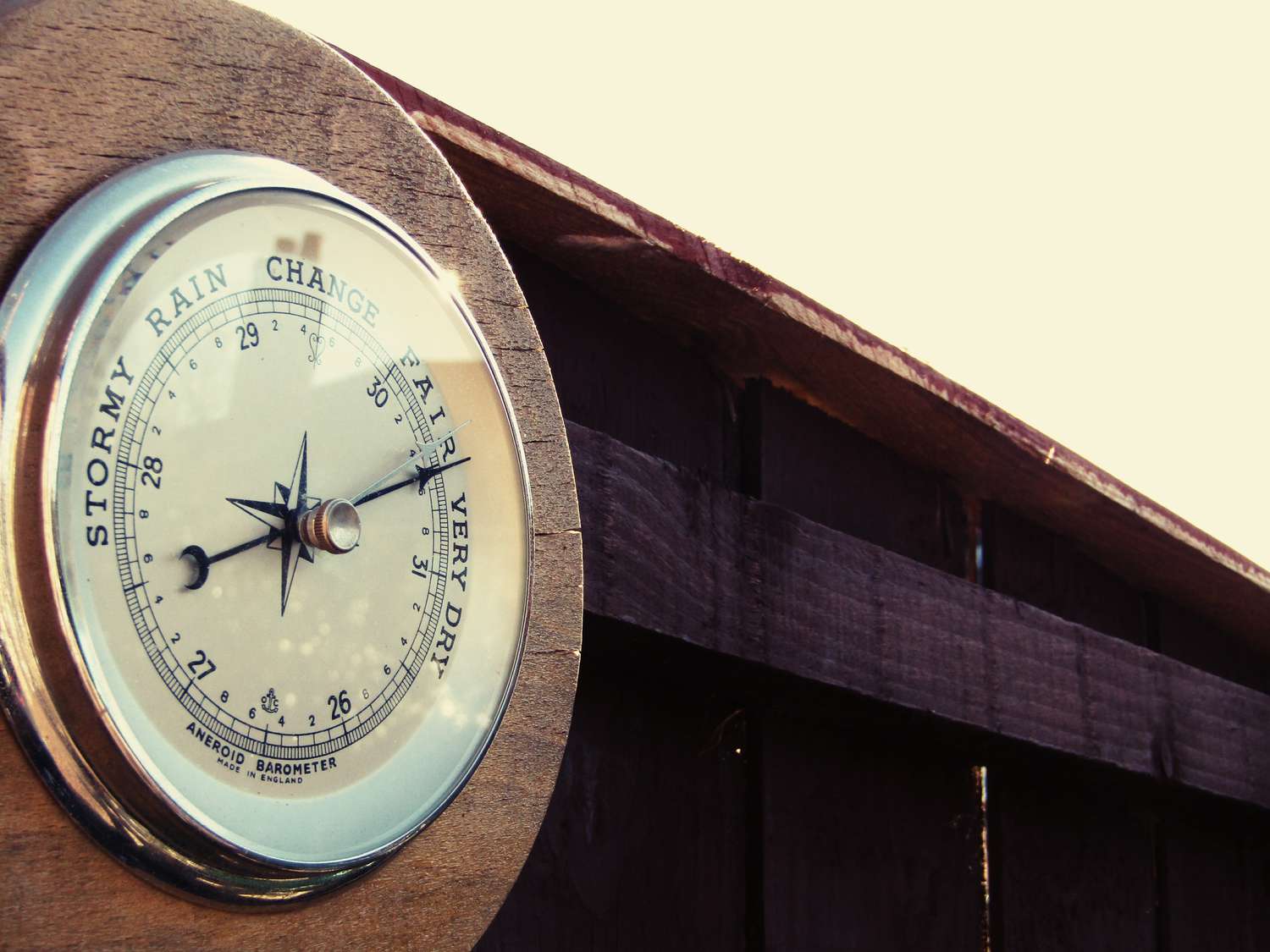
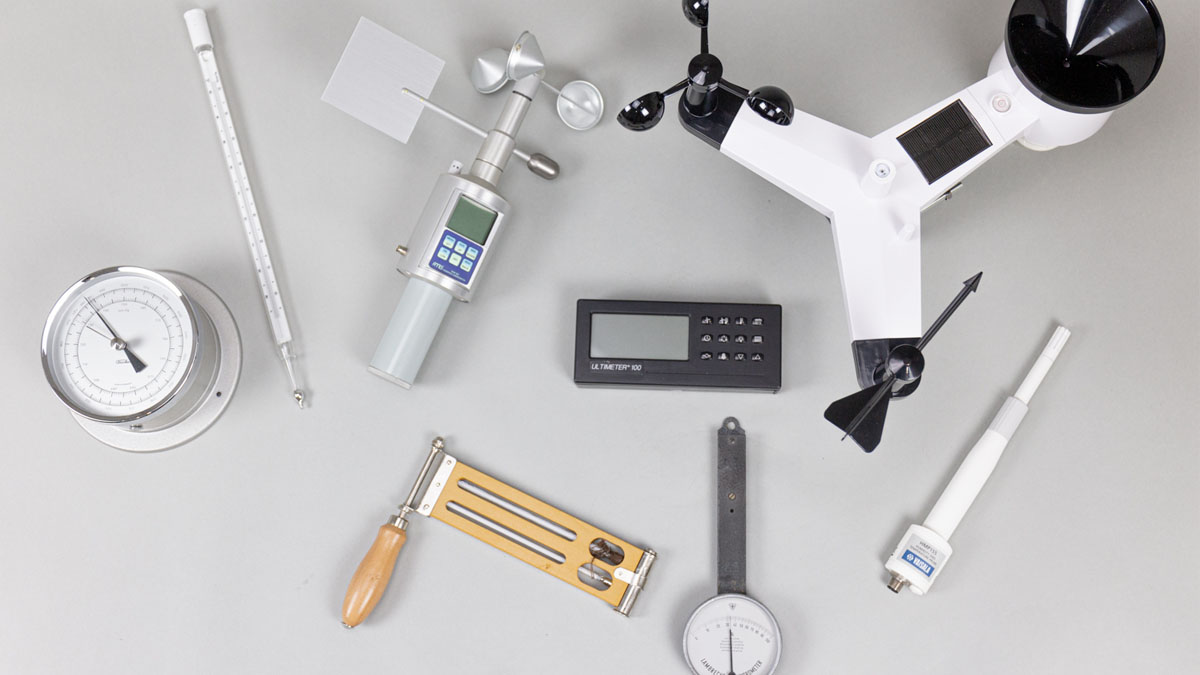
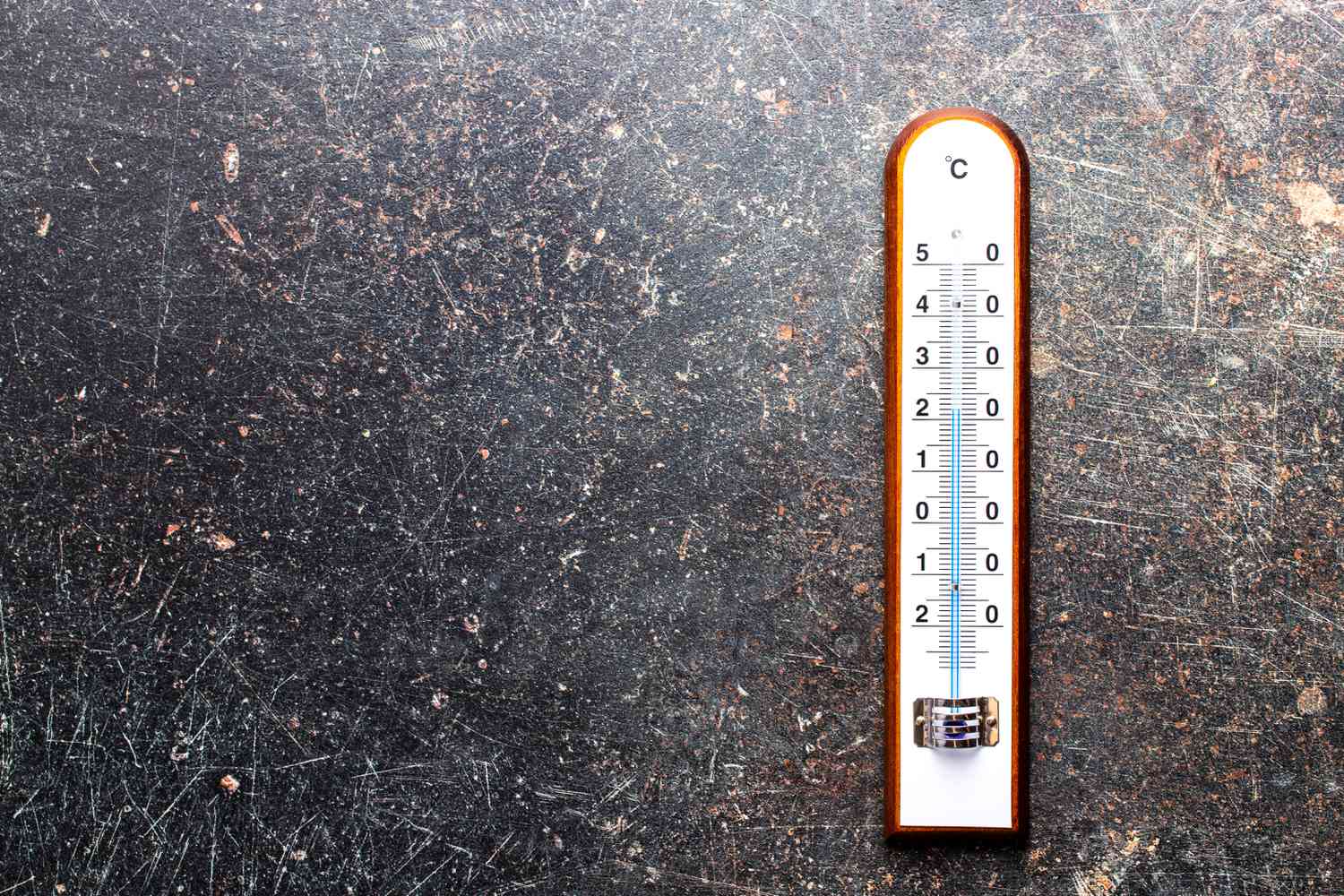
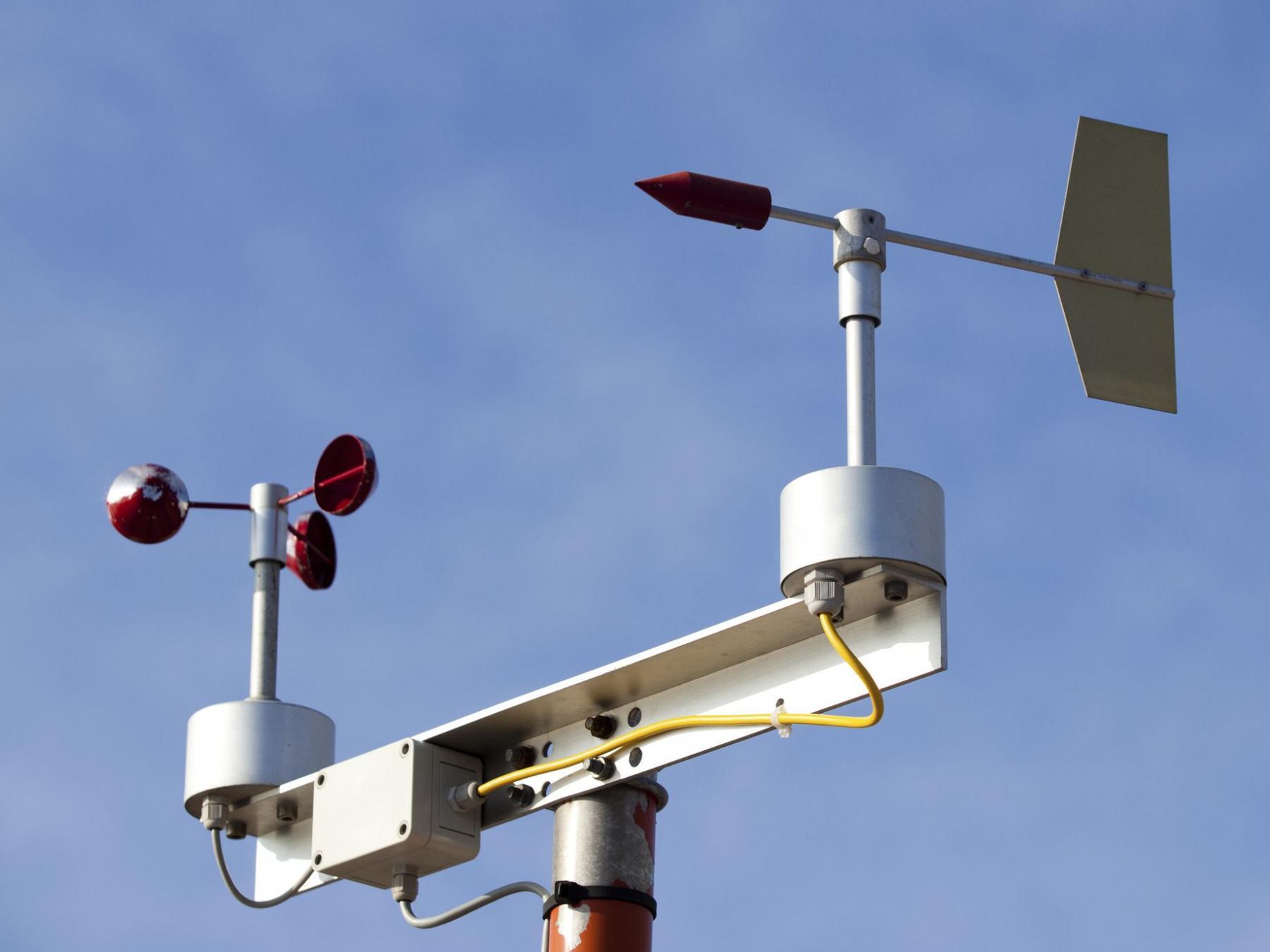
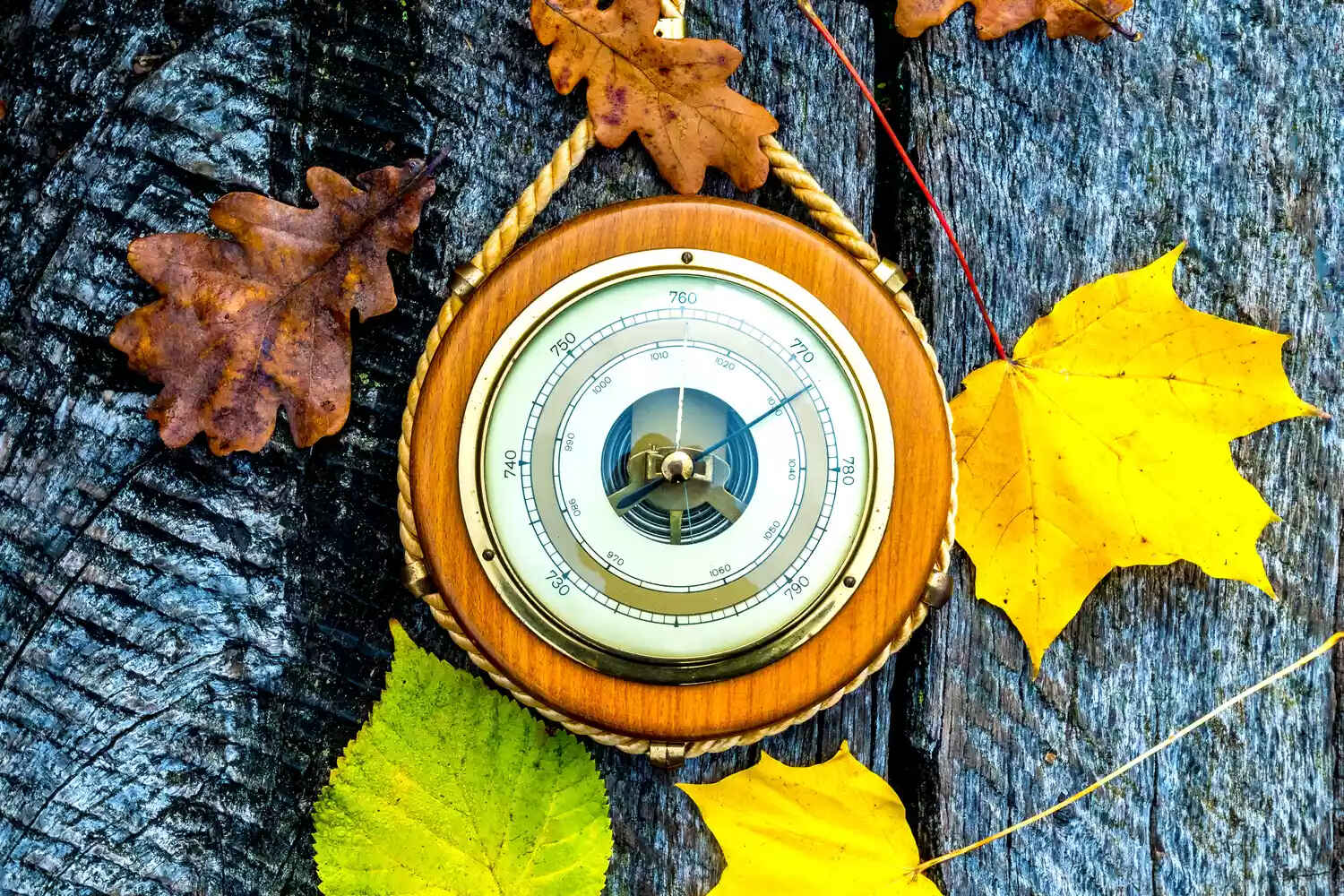
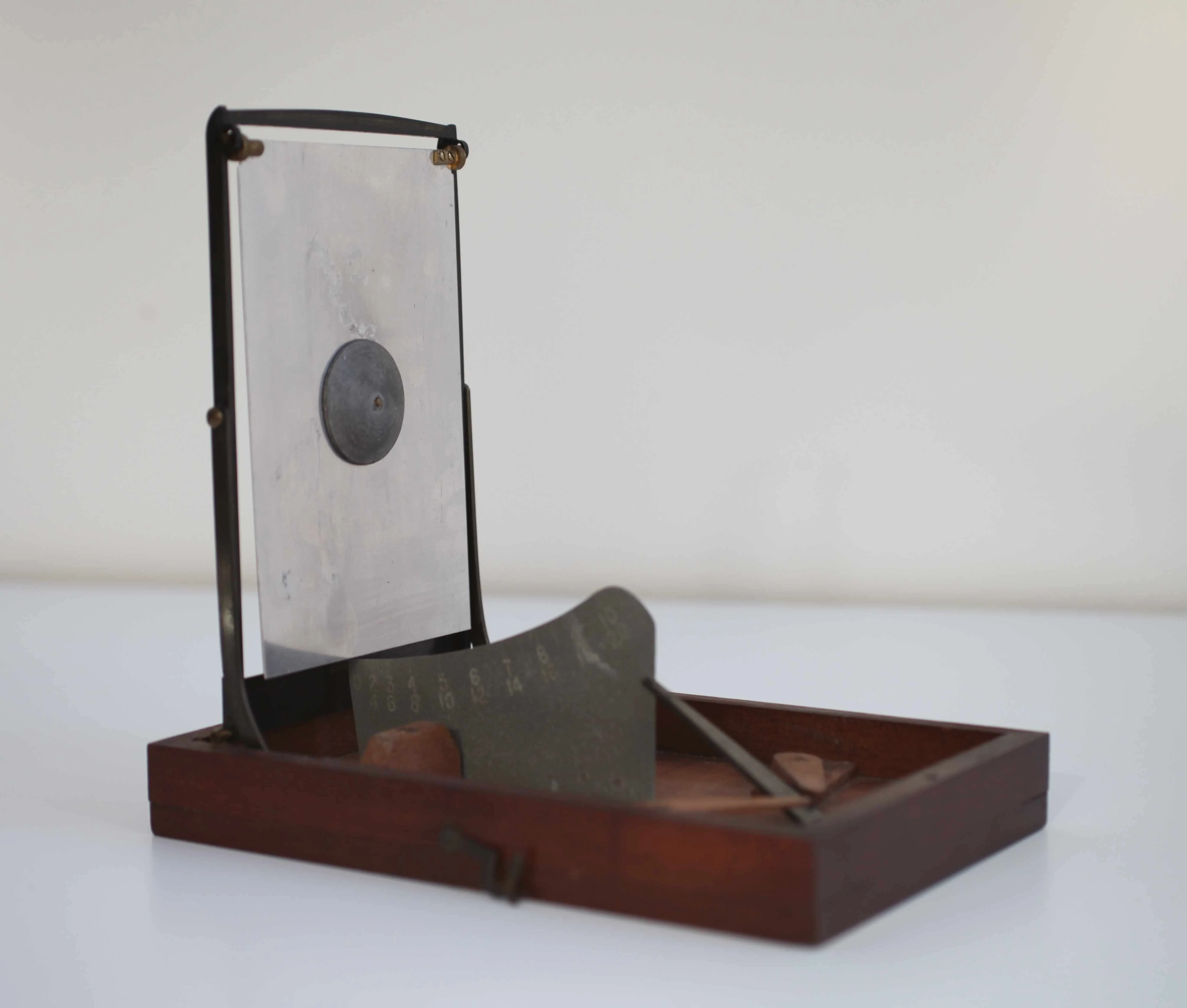
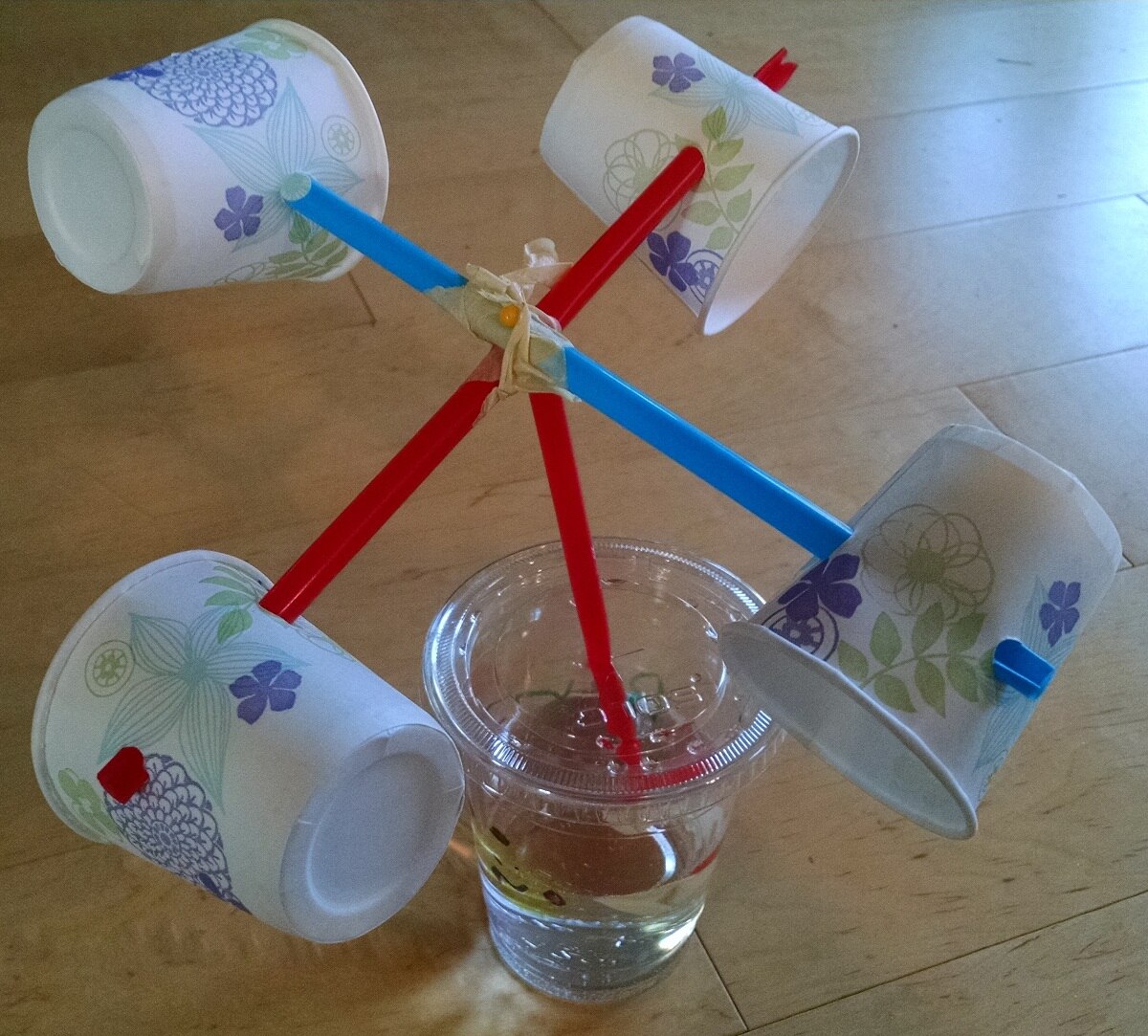
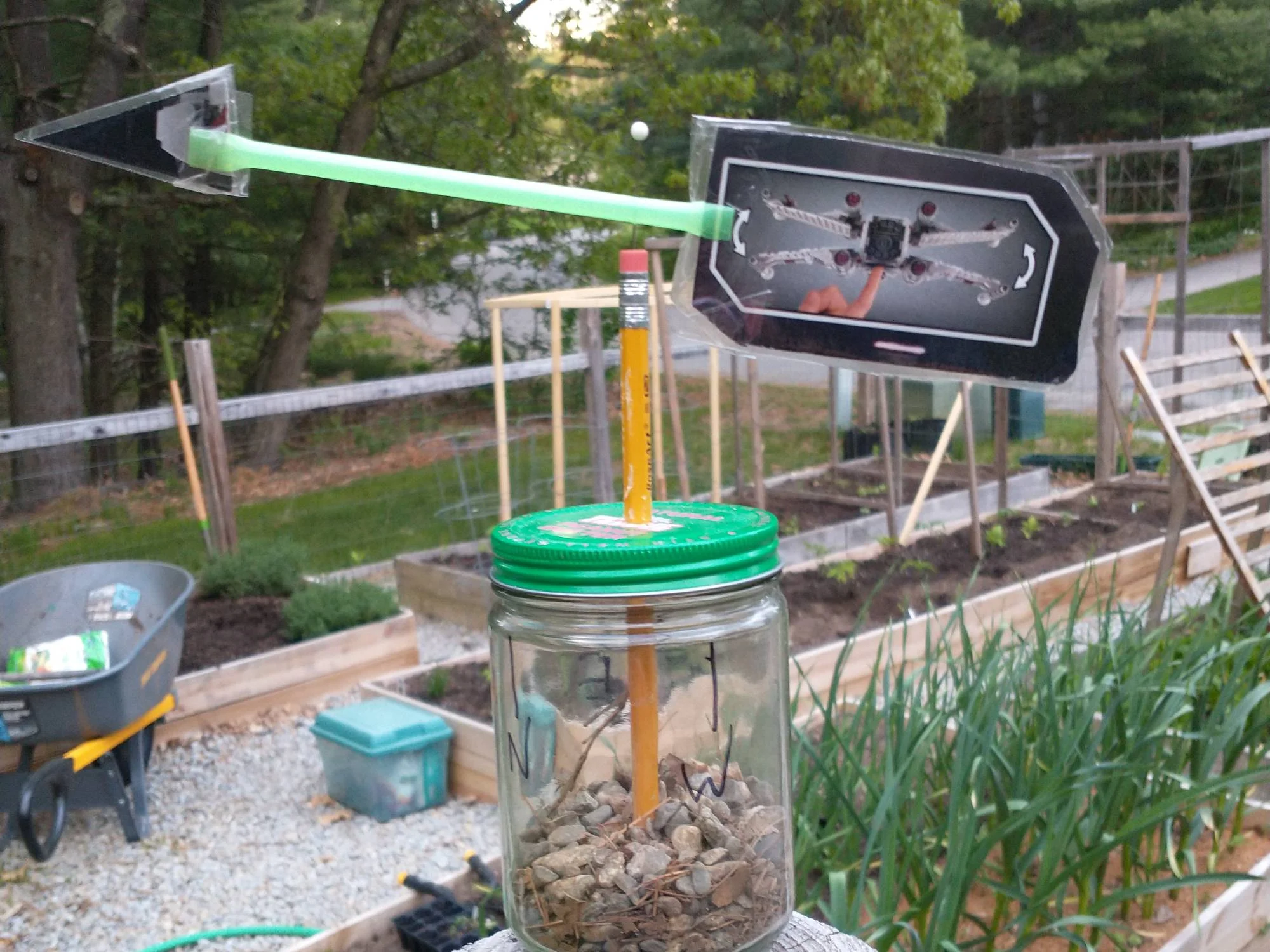
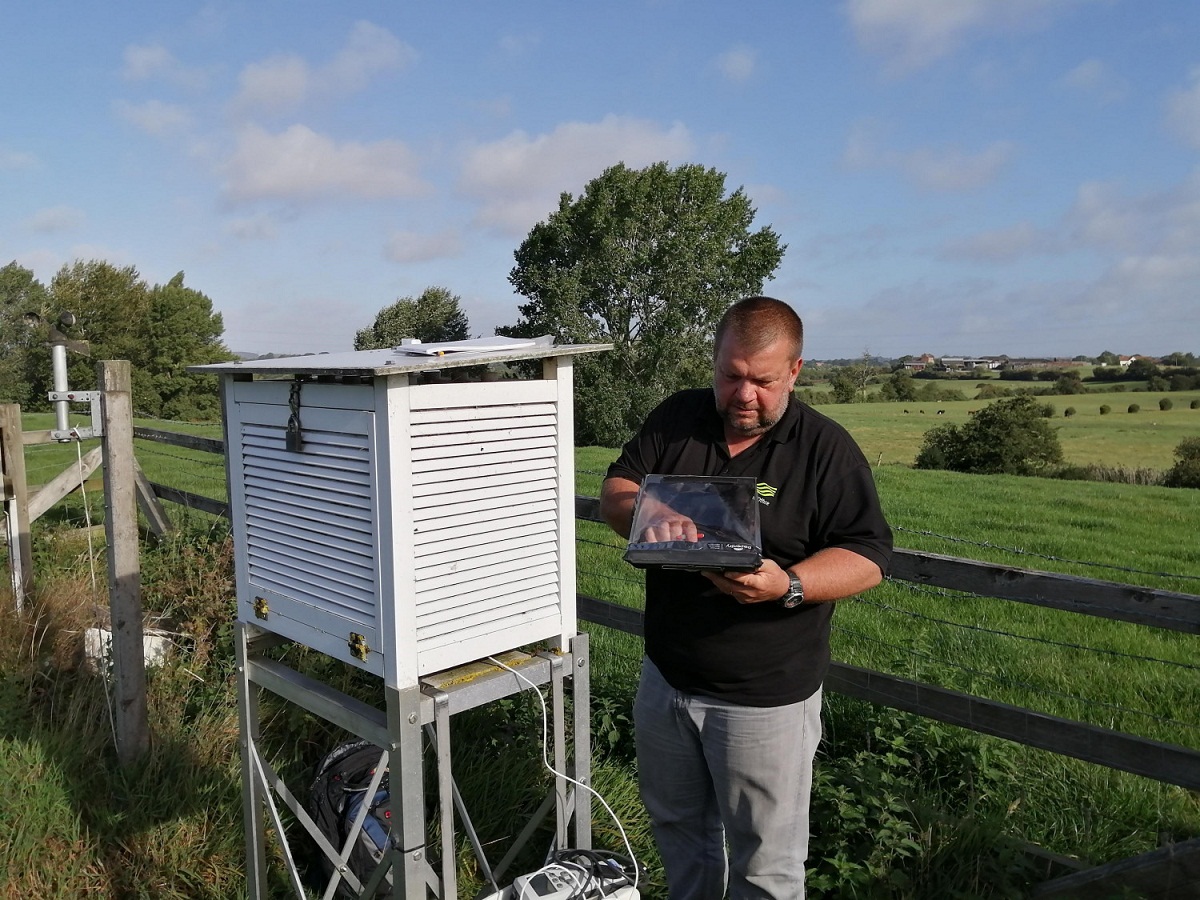


0 thoughts on “Which Weather Instrument Measures Humidity”